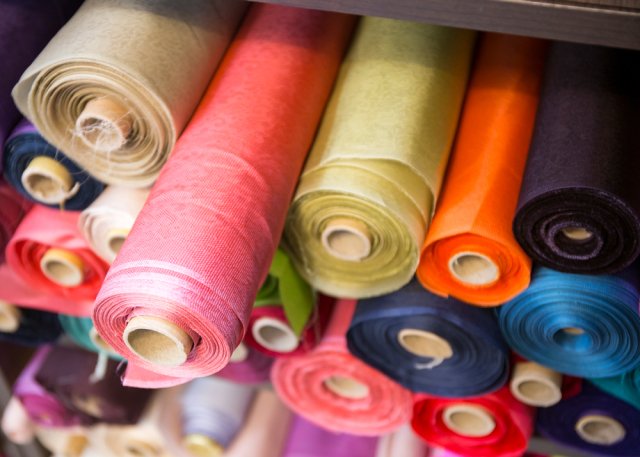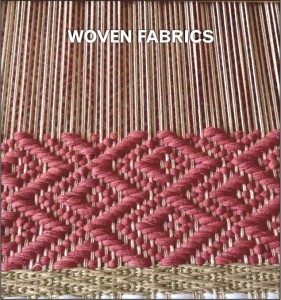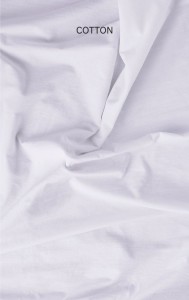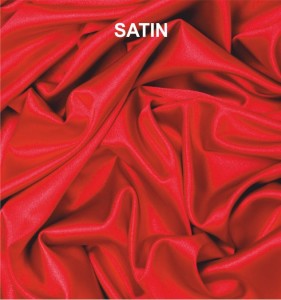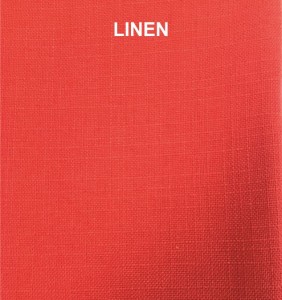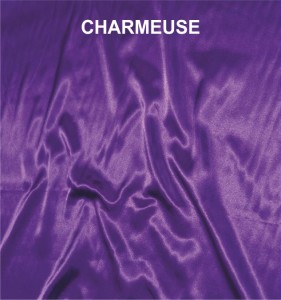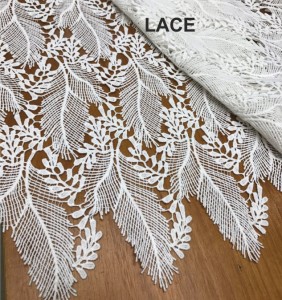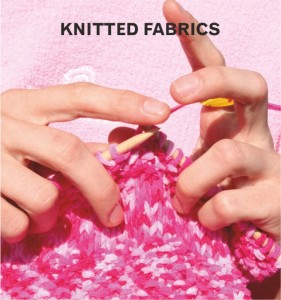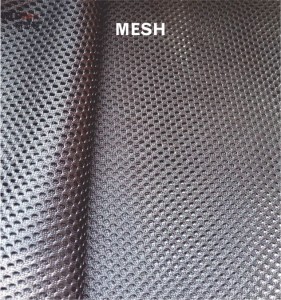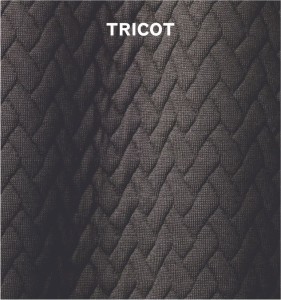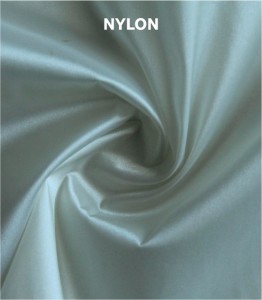Making your own lingerie can be a tiresome and confusing task, especially when it comes to selecting the right fabric. But once you know your needs in terms of the style, occasion and the type of garment that will go over your lingerie, it becomes an easy drill. Here’s a list of fabrics that will help you pick the right kind of fabric for your lingerie needs.
Lingerie can be made either with woven or knit fabrics depending on the type of garment, the amount of ease and support and the preferences of the wearer. Let’s first take a look at few woven fabrics that can be used for sewing your own lingerie.
Woven Fabrics
Woven fabrics are made by using one or more sets of yarn interlaced perpendicular to each other. Woven fabrics are more durable and can be cut into different shapes producing various styles in garments. Here are a few options of fabrics that can ease your fabric selecting decision for your lingerie.
Cotton
Cotton fabric is popular because it’s easy to care for and comfortable all year-round. It is available in both knit and woven categories. In hot, humid weather, cotton fibres absorb the moisture (sweat)and release it on the surface of the fabric, so that it evaporates. In cold weather when the fabric remains dry, the fibres retain body heat. This is one of reasons why cotton is a perfect choice for lingerie making.
Cotton is easy to clean, can be laundered or dry cleaned. It can resist high temperatures, therefore it can be boiled and thus sterilised. Cotton wrinkles easily and is prone to shrinkage, however blending cotton with other fibres or permanent fabric finishes can reduce wrinkles and shrinkage.
Satin
Now, most of the people have a misconception that satin is a fabric but no, it is not a fabric. Satin is a type of weave constructed with floating warp yarns over four weft yarns before it goes under one weft yarn and the cycle continues. These fewer interlaces gives the fabric more smooth and lustrous surface. Satin can be made from silk, polyester, nylon, etc. If cotton yarns are used to make a satin weave, the fabric is called sateen.
Satin made from pure silk is hypoallergenic and very breathable, which makes the fabric quite suitable for lingerie. Also the fabric has a luxurious and seductive look to it, which is perfect for luxury and premium lingerie.
Linen
Linen is made from flax plant and it is two or three times as strong as silk or cotton. Linen fabric has a subtle sheen to it, which is due to natural vegetable wax coating on the long fibres of the flax plant. Linen fabric is suitable for making lingerie, as the fabric allows better airflow and has the natural ability to prevent bacterial growth. Besides, it is also stiff and therefore is less likely to cling to the skin. It also has additional properties such as high absorbency, strength and elasticity.
Charmeuse
The word ‘Charmeuse’ is derived from the French word ‘charmeur féminin’, which means female charmer. This etymology speaks of the beauty of the fabric and its traditional use in women’s clothing. The fabric has a luxurious feel, beautiful drape and durability. It is lightweight and breathable, which makes it a perfect fabric for lingerie and nightwear.
Traditionally, Charmeuse is made of 100 per cent silk and is often referred to as luxury fabric since centuries. It is a blend of silk and spandex fibres and is often used in designer lingerie. Polyester can also be used as a substitute for silk to create a cheaper fabric. Charmeuse fabric has satin weave, which gives it more shine and a liquid-like appearance.
Lace
Lace is a patterned, open work fabric, which is either produced by machines or some intricate handwork by looping, braiding or twisting a thread. The history of lace fabric dates back to the 15th century. Back then, lace fabric was made of linen, gold or silver. Now, the fabric is often made from a variety of fibres such as nylon, polyester, linen, wool, cotton, silk and rayon.
Lace fabric is available in a wide range of styles, weight and textures. Some laces are soft and fine while some can be scratchy near the skin, so always make sure to test the lace before buying. Lace fabric can add that beautiful decorative element and trims to your lingerie.
Knitted Fabrics
Knit fabrics are made by interlocking loops of thread with a knitting machine. This interlocking of loops allow the knit fabrics to stretch. Knits are available in a wide range of weights, finishes, stretch capabilities and drape. Let’s take a look at a few knit fabrics that can be used in making lingerie…
Jersey
Jersey is a generic name given to all weft knitted fabrics. It was first manufactured from wool but now it is made from wool, cotton and various synthetic fibres. The name ‘Jersey’ is derived from the Isle of Jersey, one of the Channel islands between Britain and France. The first jersey fabric was hand knitted from wool and was utilized as fishermen’s sweaters.
There are two types of knitted jerseys, single jersey and double jersey. Single jersey is single layer of fabric knitted with one set of needles on a single bed of a weft knitting machine. While double jersey is knitted with two sets of needles with two needle beds on a weft knitting machine. Single jersey is lightweight and stretchy whereas double jersey is heavier and less elastic. Therefore, single jersey is best suited for making lingerie.
Apart from being stretchy and lightweight, it has other useful characteristics such as durability, softness, wrinkle resistance, drapability, and versatility. Nowadays, cotton jersey fabric with spandex, lycra or elastane is popularly used for lingerie, stockings, tights, and socks.
Mesh
Mesh fabric is technically a barrier of knitted structure formed by connecting strands ensuing in a fabric with open spaces between the strands of yarn. The fabric is typically made from synthetic fibres such as polyester or nylon. Mesh can also be created from metals to produce more sturdier and structured material for industrial use.
Back in 1888, British mill owner Lewis Haslam manufactured the first original Aertex mesh material, which was used to produce men’s shirts and undergarments due to its hygienic and breathable properties. In 1980s, Adidas made the Aertex fabric more prevalent by producing its sportswear and everyday fashion range made from the same fabric. The breathable nature of the fabric makes it ideal for innerwear or sportswear. Different types of mesh fabric with different properties can be produced with the use of different fibres in the fabric.
Among the various types of mesh fabric, polyester mesh and power mesh are ideal for making undergarments. Polyester mesh is breathable and water resistant whereas power mesh is stretchable like spandex and very comfortable. It can be used to provide light linings in bralettes, nighties or panties due to its light and delicate feature.
Tricot
Tricot is a warp knit fabric produced on a flat bed knitting machine. It has a unique zigzag weave, which gives the fabric texture on one side and smooth surface on the other. Tricot knit composed of Nylon Spandex or Polyester Spandex blends is ideal for activewear as the fabric has high durability, stretchability and even good drapeability. It has excellent wrinkle-resistance too.
The fabric does not build up static charge or cling to the body and is quite sturdy too. It can stand up to good level of day-to-day wear and tear and provide close fitting comfort stretch making it quite perfect for swimwear, sportswear, lingerie and some outerwear clothes.
Nylon
Nylon is a synthetic micro fibre that has 0.01- 0.02 denier, which is equivalent to 1/100th the diameter of human hair. It is one of the thinnest, at the same time strongest fibre made. It is made of polymers such as polyamides, which consist of carbon, oxygen, nitrogen, and hydrogen. Nylon was first manufactured in 1939 by the DuPoint company in the United States and was used to make nylon stockings during war time. A lightweight fabric that has high tensile strength with a lustrous surface, it has excellent abrasion resistance and good elasticity, which makes it a perfect choice for lingerie.
Besides, it has high resiliency and high draping quality with low absorbency. The low absorbency allows the fabric to dry fast but the fabric can feel damp and uncomfortable on your skin during hot and humid climate so avoid going for nylon lingerie during summers.

